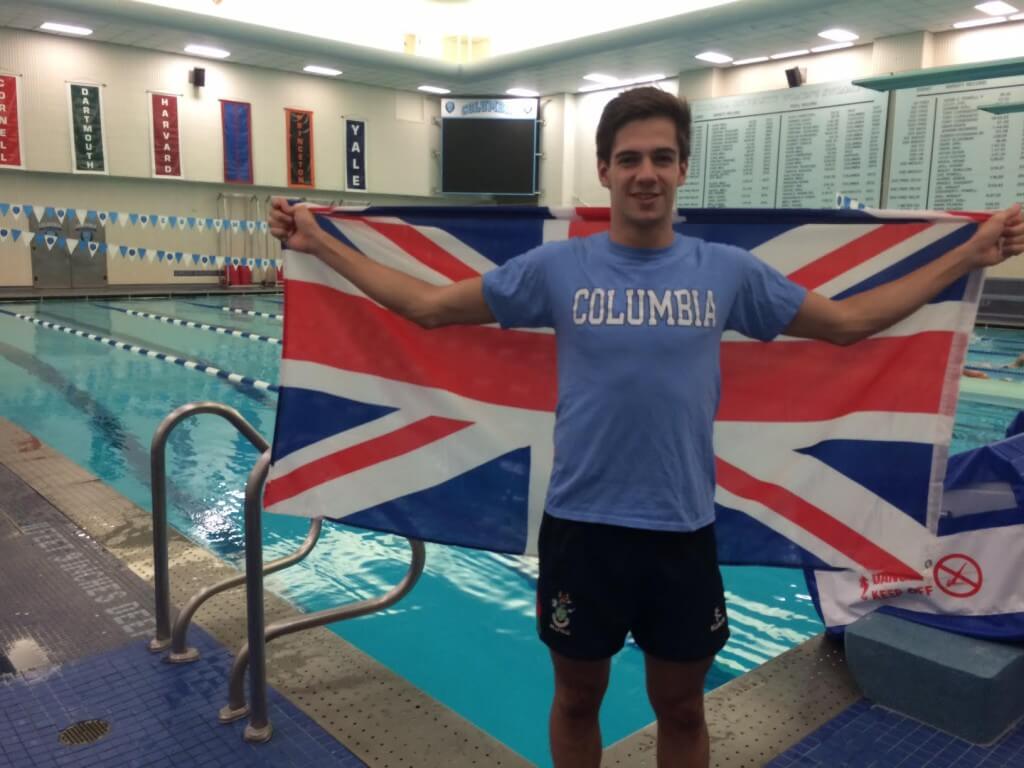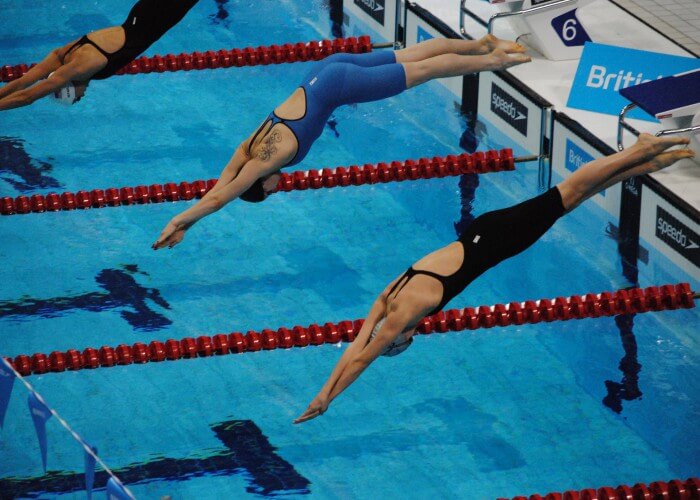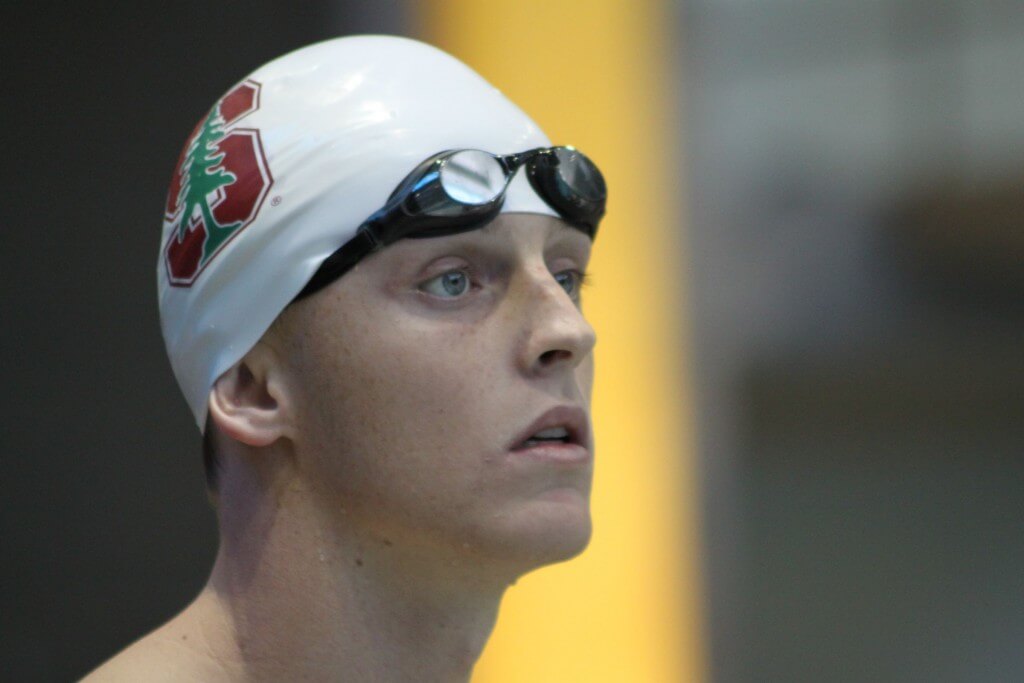Swimmers Without Borders: International Student-Athletes Adjust to Swimming in the US

By Bonnie Schipper, Swimming World College Intern
His freshman year, Sam Perry was excited to get in the water and begin his swim career at Stanford University. It was only a matter of minutes until he began swimming 50s and collided with one of his teammates swimming on the “wrong” side of the lane.
Perry is from Hamilton, New Zealand, where people swim on the left side of the lane. Each year, thousands of high school student-athletes transition into swimming in the NCAA. Most come from schools across America- however, a fraction of them travel thousands of miles from other countries to study and compete in the United States.
“New Zealand doesn’t currently have a system established to combine sports and a tertiary education,” Perry said. “I started looking [at colleges] abroad because I wanted to continue to swim and get a great degree in the least complicated way I could.”
While most aspects of the sport are the same worldwide, some countries place different emphasis on various parts of training and have different approaches to swim.
“In Japan, very high expectations are placed upon you from a young age, especially in sports,” Stanford swimmer Christian Brown from Tokyo, Japan said. “[Japanese] swimmers generally specialize very early, and don’t have much experience swimming outside of their select few events. In [NCAA] swimming, the coaches put me in events that they need me to swim, not necessarily events that I would consider my specialties. The needs of the team come first, and that was a new experience for me.”
In the U.S.A., a country that won 31 medals in swimming events in the 2012 summer Olympics, athletes have found it much easier to train competitively than in countries with fewer resources dedicated to the sport.
“Swimming specifically, in Canada isn’t a very popular sport, so it doesn’t get much support or recognition, which fosters a less competitive environment and makes it less appealing to people who may otherwise love swimming,” Yale swimmer Cassidy Richards from New Brunswick, Canada said.
Athletic teams are embedded into the American secondary school system, unlike in a majority of other countries where athletes compete only for outside leagues and organizations.
“American universities’ sports provisions are far greater than those in England. [There is a] higher standard of training, coaching, and competition,” Harvard diver Jing Leung from London, England said. “I stayed in England, I would have either had to quit diving, or continue diving at a poor level. I definitely would not be able to have the efficient days I do here in America, where I can study and train and compete at a high standard.”

Photo Courtesy: Isabella Hindley
Harvard University’s swim and dive roster includes nine athletes from countries other than the U.S., making it one of the most ethnically diverse collegiate teams in the country. Each of the other teams in the Ivy League also include swimmers from other countries on their rosters.
“Swimming has definitely helped my transition into living in a different country,” Yale’s Isabella Hindley from London, England said. “As all of your experiences are new and different, having one constant throughout the transition makes it a lot easier. The people I’m swimming with are different, the people that are coaching me are different, the place where I’m swimming is different, but I’m still doing the same thing in the pool, and to me that is very comforting.”





Ayyyy Jing Leung
haha wow nice. didn’t realise that’s where my email would end up :/
It is frustrating when foreign swimmers get full rides to D1 colleges and our kids get very little schalorship money. It really isn’t fair. Every opportunity should be given to US students to swim and receive an education. Giving monies to foreign students seems counter productive. They go back to where they came from with a free education, free swimming experience, and swim for their country. It doesn’t make sense to me.
I’ll bring two points to your attention.
1) Students from the U.S. have the same opportunities in most countries as locals when it comes to access the most of the time FREE tertiary education these countries have. Since these countries dedicate part of their budget to students like them, why shouldn’t foreign students have similar opportunities in the U.S.?
2) Taking the commonly known fact that tertiary institutions in the U.S. are basically businesses, it’s most probable that they would get more brand advertisement when boasting Olympians and a culturally diverse squad rather than just having U.S. swimmers who might not be at the same level.
Sajan Prakash
They come to the US for a better and free education and better coaching. Their universities aren’t free, that’s why they seek out coaches and schools in the US. Then they take their education and better swimming, and swim for THEIR country at the Olympics, nationals, Worlds etc. Why would our students go outside the US for an education when we are #1 in the world? Not making any sense to me. And at last check, the US is pretty diverse. We need to educate our population first, and let other countries worry about their own. We are going down the crapper trying to save everybody, while we ourselves are drowning. There is plenty of potential here, but not plenty of opportunity for a lot of people. USA Swimmings initiative to teach all kids to swim will be proof positive for swimming in the US in the future. The talent is here. It needs to be cultivated.
Kelcie Gerson do you know this guy??
Having a diverse sports team isn’t only beneficial to those that come from a different country and culture, but is also a learning experience for the U.S. Americans on the team. They’ll how to navigate a multicultural environment, raise their cultural intelligence by being exposed to people from abroad. A fantastic experience to learn from each other for all involved.